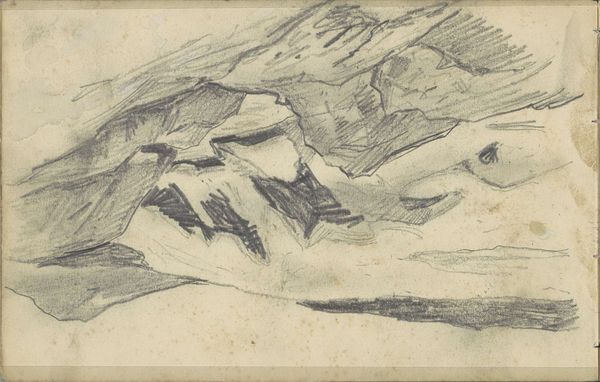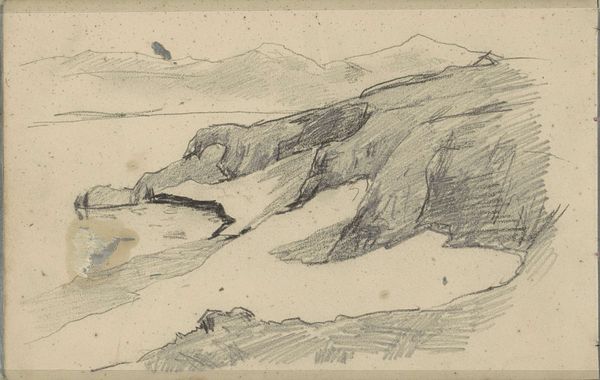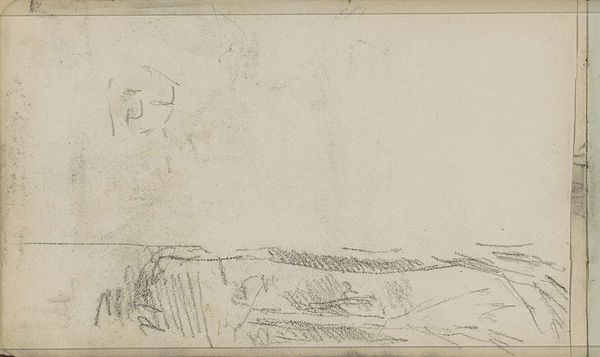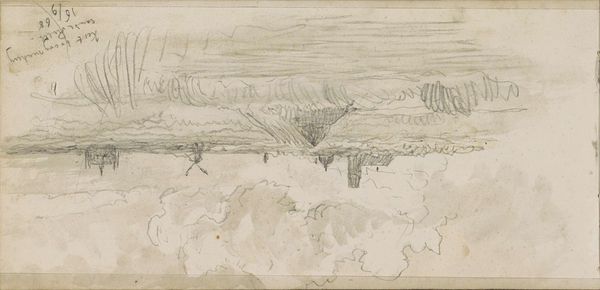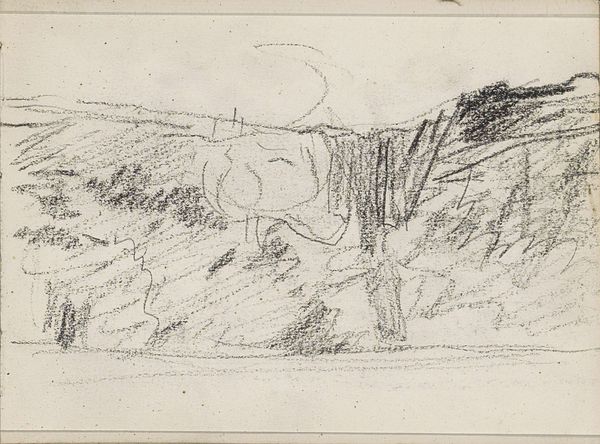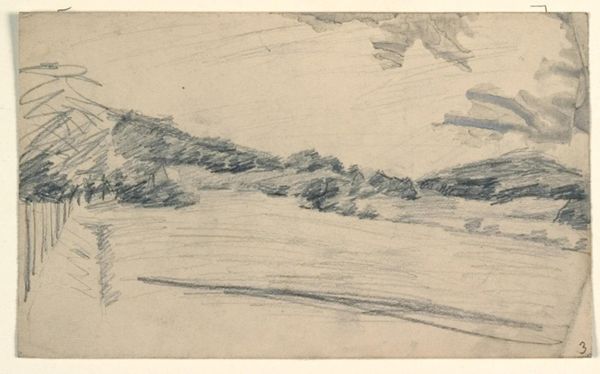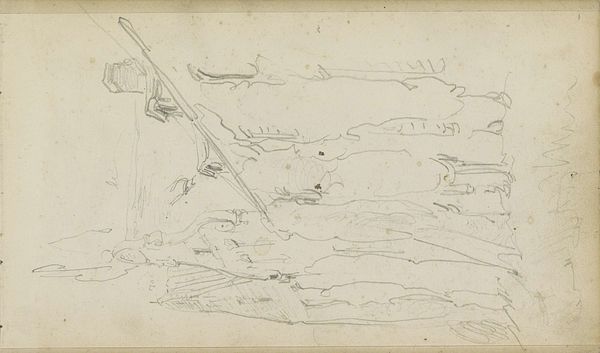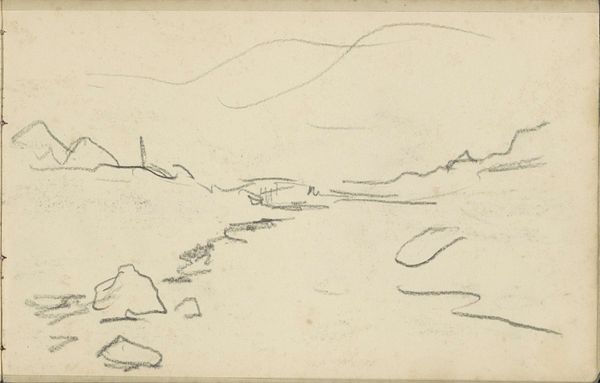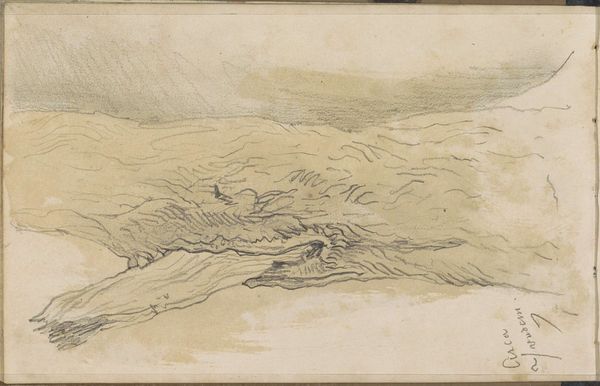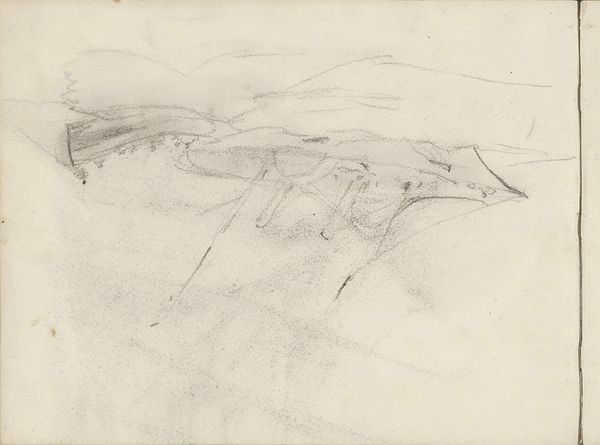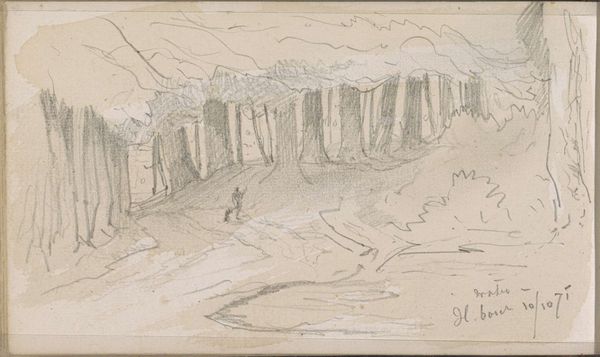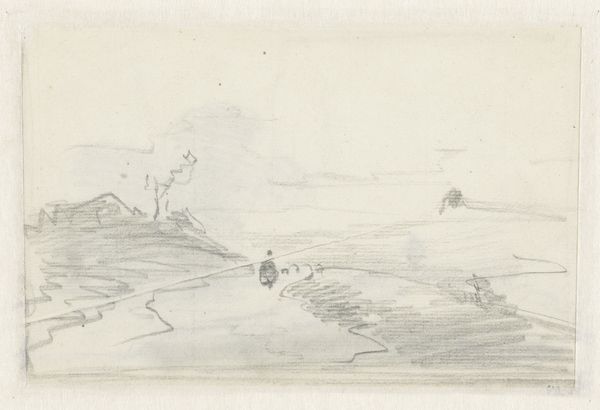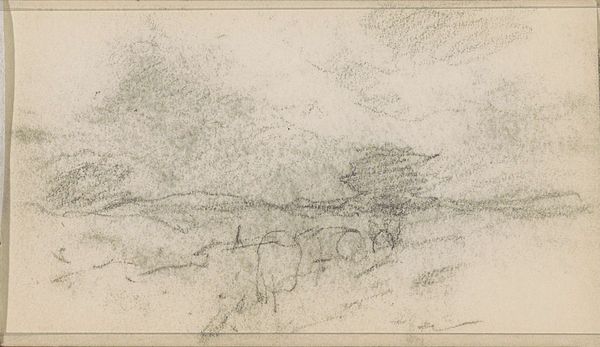
drawing, pencil
#
drawing
#
pencil sketch
#
landscape
#
waterfall
#
pencil
#
realism
Copyright: Rijks Museum: Open Domain
Editor: This is Louis Apol's "View of a Waterfall in the Kruzenshtern Bay in Nova Zembla," a pencil drawing from 1880. The muted tones create quite a stark atmosphere. What do you see in this piece? Curator: I see a deliberate exploration of line and texture to evoke the harshness of the Arctic landscape. Note how the artist uses varied strokes to distinguish the rocky foreground from the distant, icy expanse. The waterfall itself is rendered with a surprisingly delicate touch, almost dematerializing into mist. Editor: It's interesting how you point out the different textures. Does that inform our understanding of the form? Curator: Absolutely. Apol is acutely attuned to the contrasts inherent in the natural world. The rough, angular rocks juxtaposed with the fluid, ethereal waterfall establish a powerful visual tension. Consider also the composition: the horizon line is placed rather high, emphasizing the overwhelming scale of the environment. Editor: So, the artist uses contrasting techniques to draw us into that atmosphere? Curator: Precisely. It is not simply a representational exercise, but a carefully orchestrated arrangement of form, line, and tone. He’s constructed an emotional landscape through purely formal means, compelling us to confront the sublime power of nature. The almost monochromatic rendering is integral here. It distills the scene to its essential visual components, thereby amplifying the dramatic impact. Editor: That makes sense. I initially perceived it as a simple sketch, but now I see it's a lot more sophisticated than that. Curator: Yes, indeed. Formal analysis encourages us to look beyond surface appearances and discern the underlying artistic strategies at play.
Comments
No comments
Be the first to comment and join the conversation on the ultimate creative platform.
